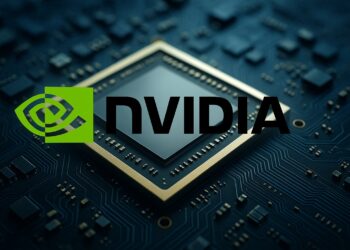OpenAI’s compute appetite has turned from “lots of GPUs” into a full-stack systems challenge: chips, packaging, networking, software, and power—delivered on a predictable cadence. Broadcom sits at a strategic crossroads of that buildout. Long known for custom silicon and hyperscale-class Ethernet, Broadcom has emerged as a key collaborator for AI accelerators and the networks that bind them into clusters. This piece unpacks the why, the what, and the so-what for both companies.
Why Broadcom matters to OpenAI
- Custom silicon DNA: Broadcom has decades of experience designing high-performance ASICs for hyperscalers. For an AI lab that iterates models quickly, a partner who can translate workload requirements into silicon on a reliable schedule is gold.
- Networking at extreme scale: Broadcom’s Tomahawk (switch) and Jericho (fabric router) families anchor many hyperscale data centers. As AI clusters jump from thousands to hundreds of thousands of accelerators, the fabric’s congestion control, telemetry, and loss characteristics become as critical as the chip’s TOPS.
- Ethernet-first strategy: The industry conversation has shifted from “InfiniBand or bust” to “Ethernet if tuned properly.” That shift widens supply options, can lower costs at scale, and reduces vendor lock-in—all priorities for OpenAI.
What the collaboration likely looks like (in practice)
- Split responsibilities:
- OpenAI: model and system requirements; accelerator architecture; software stack; cluster topology.
- Broadcom: co-development of custom accelerator silicon and I/O; switch and fabric silicon; NICs and optics; reference designs for multi-rack and multi-site fabrics.
- System design goals:
- Throughput, not just peak FLOPs. The real KPI is step-time for large training runs and tail latency for inference at scale.
- Composability. The ability to re-tile clusters across training and inference, with software that treats Ethernet like a first-class, loss-aware HPC fabric.
- Cost per token. Every layer—from packaging to optics to rack power—must keep unit economics trending down, generation after generation.
- Deployment arc:
- Early silicon targets internal OpenAI workloads first (training and high-QPS inference).
- Subsequent spins tighten the feedback loop between model changes and hardware features (memory bandwidth, interconnect radix, sparsity/precision support).
- Networking scales from single-site clusters to inter-DC fabrics capable of spanning multiple campuses when needed.
Strategic implications
- For OpenAI: Hardware that moves in lockstep with model roadmaps reduces schedule risk and total cost of ownership. It also supports diversification—running mixes of custom accelerators alongside Nvidia and AMD where each is strongest.
- For Broadcom: The narrative expands from “AI networking leader” to “AI platform partner,” capturing silicon, optics, and systems revenue with multi-year visibility.
- For the ecosystem: Foundry capacity and advanced packaging become the gating factors. Software maturity (collectives, schedulers, RoCE tuning, telemetry) will determine whether Ethernet-based clusters consistently match or exceed traditional HPC fabrics on real workloads.
The economics behind the bet
- Silicon specialization: General-purpose GPUs are fantastic Swiss Army knives, but purpose-built accelerators can slash cost per token when aligned to known model patterns (sequence lengths, parameter counts, sparsity, preferred precisions).
- Network topology as a feature: Bisection bandwidth and loss behavior drive effective utilization. Better fabrics lift cluster “yield,” sometimes more than a faster chip would.
- Supply optionality: A robust Ethernet stack plus custom silicon diversifies vendor risk, smoothing capacity ramps and pricing over several generations.
Risks and execution watch-outs
- Schedule risk: New accelerators must hit performance and efficiency targets on first or second spin; packaging or validation delays can cascade.
- Software reality: Achieving near-line-rate collective ops over Ethernet at million-core scale demands disciplined congestion control, observability, and autotuning.
- Power and cooling: Multi-campus rollouts hinge on grid interconnects, thermal envelopes, and optics power budgets as much as on chips.
- Ecosystem readiness: Masks, pellicles, substrates, CoWoS-class packaging, and supply chain kitting must all scale in sync.
What to watch next
- Tapeouts and stepping cadence for custom accelerators, plus any sign of specialized inference SKUs.
- Networking milestones: next-gen Tomahawk/Jericho parts, higher-radix switches, and NIC feature roadmaps aimed at AI collectives.
- Software disclosures: progress on Ethernet-optimized collectives, compiler support for new datatypes, and cluster-scale schedulers.
- Capacity signals: buildout pace across data centers, optics volumes, and advanced packaging availability.
Conclusion
Broadcom and OpenAI are aligning around a simple idea: the fastest path to better AI is not a single “faster chip,” but a cohesive system—custom accelerators tuned to the workload, an Ethernet fabric that scales cleanly, and software that extracts usable performance at cluster scale. If execution stays on track, OpenAI gets steadier cost curves and faster iteration cycles; Broadcom graduates from a parts supplier to a cornerstone of the AI systems stack.
FAQ
Is this about replacing GPUs?
Not entirely. Expect a mixed fleet: custom accelerators for core workloads, with Nvidia and AMD continuing to play important roles where they fit best.
Why is Ethernet suddenly credible for AI training?
Switch silicon, NICs, and software have improved. With loss management and congestion control, Ethernet can deliver HPC-grade behavior while preserving supply flexibility and cost advantages at hyperscale.
What’s the hardest part to get right?
Software meeting hardware at scale—collectives, graph partitioning, schedulers, and telemetry that keep utilization high even as clusters sprawl across rows, halls, and sites.
When will end users notice?
If the stack works, you won’t—other than faster model rollouts, lower latency, and falling costs for AI-powered services.
Disclaimer
This article is for informational purposes only and does not constitute investment advice, an offer, or a solicitation to buy or sell any securities. All figures and forward-looking statements reflect information believed to be reliable as of October 13, 2025 and may change without notice. Investors should conduct their own research and consider their objectives, financial situation, and risk tolerance before making investment decisions.






